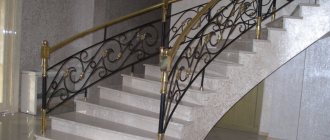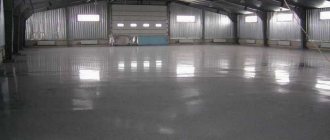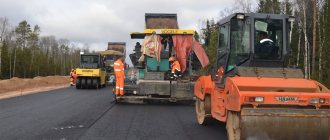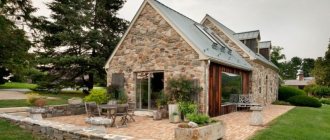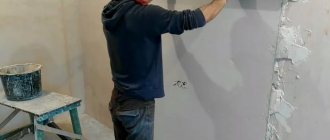This standard establishes standards for the arrangement of stair railings for flights equipped with more than three steps. It applies to balcony stairs and roof railings.
For the manufacture of critical structures, it is customary to use GOST standards in construction. Metal stairs and railings belong to this type of structure, so certain standards are applied when designing and manufacturing these products.
Regulatory documentation and drawings must indicate the requirements for the material used in the manufacture of stairs, the permissible dimensions and the method of placing products in the building plan.
To describe the conditions for the manufacture and installation of metal stairs and railings, GOSTs have been developed:
This set of rules must be observed at all stages of the creation and operation of industrial and laboratory buildings, industrial and laboratory premises, workshops (functional fire hazard class F5.1), as well as warehouse buildings and premises intended for storing substances, materials, products and raw materials ( cargo) (functional fire hazard class F5.2), including those built into buildings with other functional fire hazard, in order to meet the requirements.
This set of rules must be observed at all stages of the creation and operation of industrial and laboratory buildings, industrial and laboratory premises, workshops (functional fire hazard class F5.1), as well as warehouse buildings and premises intended for storing substances, materials, products and raw materials ( cargo) (functional fire hazard class F5.2), including those built into buildings with other functional fire hazard, in order to meet the requirements.
This set of rules has been compiled with the aim of increasing the level of safety in buildings and structures of people and the safety of material assets in accordance with Federal Law of December 30, 2009 N 384-FZ “Technical Regulations on the Safety of Buildings and Structures”, fulfilling the requirements of the Federal Law of November 23 2009 N 261-FZ “On energy saving and increasing energy efficiency and on introducing amendments to certain legislative acts of the Russian Federation”, increasing the level of harmonization of regulatory requirements with European and international regulatory documents, applying uniform methods for determining operational characteristics and evaluation methods. The requirements of the Federal Law of July 22, 2008 N 123-FZ “Technical Regulations on Fire Safety Requirements” were also taken into account.
Certain provisions of this document are included in the List of national standards and codes of practice (parts of such standards and codes of practice), as a result of which, on a mandatory basis, compliance with the requirements of the Federal Law “Technical Regulations on the Safety of Buildings and Structures” (Resolution of the Government of the Russian Federation dated July 4, 2020) is ensured. N 985).
The document is included in the List of documents in the field of standardization, as a result of which, on a voluntary basis, compliance with the requirements of Federal Law dated December 30, 2009 N 384-FZ “Technical Regulations on the Safety of Buildings and Structures” is ensured (Order of Rosstandart dated April 2, 2020 N 687).
Site sections related to this document:
1 DEVELOPED by the Closed Joint Stock Company "Central Order of the Red Banner of Labor Research and Design Institute of Building Metal Structures named after N.P. Melnikov" (CJSC "TsNIIPSK named after N.P. Melnikov")
General requirements for stair elements
- Wedge-shaped steps.
A tread of 10 cm on the inner border of the useful width of the wedge-shaped (winder) degrees. The size of the tread increases to 26 cm (not less) for marching stairs.
- Staircase landings.
According to the requirements, when designing stairs between floors, it is necessary to provide enclosing structures with a height of 90 cm. The spacing between railing balusters is no more than 15 cm. In multi-apartment residential buildings, where the main structure will be used by small children, the height of the fence should be from 1.2 to 1.5 m, and the pitch between balusters is no more than 10 cm. There are also requirements for entrance porch structures. If they are designed for 3 or more steps, then the height of the fence should be at least 800 mm.
The lighting requirements for the main structures must also be observed. SNiP require high-quality illumination of steps, especially the first and last elements of the flight. If there are window openings (according to GOST, if they are located at the height of an adult), they must be fenced.
The video below describes in more detail the requirements for stair elements. It is explained why exactly these dimensions and values for the railings were obtained.
Considering that the human body occupies approximately 0.3 m, 33 conventional people can be located at a distance of 10 meters. Accordingly, when lifted, 26 people can fit at 8 meters. Based on these calculations, the throughput during descent is 33 people per minute, and during ascent - 26 people per minute.
Concrete is a universal material
And the areas between them are often formed from ready-made elements. Such structures consist of high-grade material (minimum B15) and are also equipped with a metal frame.
The production of reinforced concrete products is carried out by factories and enterprises whose activities are strictly regulated, so the developer does not have to worry about compliance with manufacturing rules. However, the correct assembly and fixation of structures depends only on the qualifications of master builders.
Concrete slabs for staircase landings (dimensions are selected taking into account the dimensions of the building and the width of the flights) are used in the construction of brick and concrete buildings, as well as in cases where combined techniques are used.
Their strength, ease of use and wide possibilities for decoration significantly speed up and facilitate the construction process.
Reinforced concrete landings (dimensions do not affect performance characteristics) are recommended for constructing internal and external stairs. However, it should be borne in mind that reinforced concrete products will be able to retain their properties in the absence of aggressive environmental conditions. The maximum permissible air temperature should not be lower than -40 degrees.
How stairs are designed
When designing, a factor such as throughput is taken into account. This value is equal to the number of people who can pass in one minute in the narrowest place. The requirements for cross-country ability are based on theoretical studies of the speed of movement of people during ascent and descent. A person moves down at an average speed of 10 meters per minute, and rises at an average speed of 8 meters per minute.
Considering that the human body occupies approximately 0.3 m, 33 conventional people can be located at a distance of 10 meters. Accordingly, when lifted, 26 people can fit at 8 meters. Based on these calculations, the throughput during descent is 33 people per minute, and during ascent - 26 people per minute.
Knowing the capacity and taking into account the number of people who can be in the building at one time, they design the number and width of flights of stairs required for evacuation. Having determined the width of the flight, calculate the dimensions of the landings, corridors and the width of the doors leading to the landings.
Accepted standards require the construction of marches having a width of 1100 mm for auxiliary structures. The main staircases have the following dimensions depending on the number of people being evacuated:
- 1400 mm – up to 150 people;
- 1600 mm – from 150 to 200 people;
- 1800 mm – from 200 to 250 people;
- 2000 mm – from 250 to 325 people;
- 2200 mm – from 325 to 400 people;
- 2400 mm – from 400 to 500 people;
- 2600 mm – from 500 to 600 people;
- 2800 mm – from 600 to 700 people;
- 3000 mm – from 700 to 800 people;
It is not advisable to make wider marches, and if necessary, increase the number. These standards also apply to design for production premises.
Stairs with less traffic are still not made narrower than 1300 mm. Otherwise, it becomes difficult to carry things. An exception may be in production when lifting to an individual place of work. Their size is allowed at 750 mm.
The width of the march also determines the size of the site. It has dimensions no less than the width of the marches adjacent to it. If production places special requirements for the carrying of any objects, then the platforms are arranged in accordance with these requirements: for example, in medical institutions, the dimensions of the platform are designed for the length of the stretcher.
The design, dimensions and requirements for reinforced concrete platforms of stairs and flights are regulated by the industry standard GOST 9818-85, which applies to products made of light and heavy concrete with an average density level ranging from 1600 to 2000 kg/m3.
What should the flights of stairs and landings on emergency stairs be like?
Planning evacuation and rescue measures becomes necessary when constructing multi-storey buildings or public buildings.
It is not only flights and staircases that are subject to regulation. The dimensions (GOST determines the main parameters) of these elements, as well as the dimensions of the corridors that are adjacent to such structures, should not deviate from the norm.
Thus, the width of the flight that can be used for evacuation should not be narrower than the door opening onto it. Dimensions of landings and flights:
- For buildings of class F 1.1 (fire safety characteristics for multi-storey buildings in which a large number of people are planned to live or temporarily stay), the size is 1350 mm.
- If there will be more than 200 people on the floors of the building (except the first) at the same time, then the staircase must be at least 1200 mm.
- In the case where the staircase structure overlooks the workplace of one person, its width is allowed from 700 mm.
- In other cases, this indicator should have an average value of 900 mm.
Classification of concrete stair structures
The inclined part of a reinforced concrete stair element is usually called a march. The march includes steps and a supporting structure, representing a connecting link between floors and interfloor floors. According to the number of half-platforms, the absence or presence of frieze steps in accordance with GOST 9818-85 standards, flights will be divided into the following types:
- LM – products without frieze steps with flat flights of stairs;
- LMP – ribbed marches with half-platforms;
- LMF – ribbed structures equipped with frieze steps;
The steps that are located closest to the concrete platform are usually called frieze. Ribbed marches with half-platforms are classified into products with one and two half-platforms. Flat ones are designed for installation in heated and unheated buildings, both indoors and outdoors, with an operating temperature limit of up to -40ºС.
Horizontal platforms that perform the function of connecting spans are differentiated into the following types:
- a) ribbed or flat type for constructing marches without frieze steps of the LM type (2LP and 1LP);
- b) intermediate and storey structures of ribbed LPP slabs, used to equip LMP flights;
- c) LPF ribbed slabs, used in conjunction with LMF marches.
Parameters and characteristics of stair elements
According to GOST 9818-85, flights of stairs and slabs of span structures are intended for installation and operation with a load of up to 3.5 kPa in residential buildings and up to 4.7 kPa in industrial buildings, industrial buildings, auxiliary and public buildings.
Site dimensions
Platforms that perform the function of connecting steps into spans can consist of either one or two elements. The length of the platform in a building between straight flights is determined based on human comfort and must be at least one average step. As a rule, this value is taken to be 620 mm. The standard size of turntables varies in length from 1000 mm. In this case, the width is equal to the width of the flight of stairs.
Number of steps and step size
Angle parameters and length
For comfortable and safe movement along flights of stairs, the recommended angle of inclination is from 35 to 45 degrees. This range should include building elements when constructing staircase structures in public and residential buildings.
The choice of staircase width depends on the designed throughput, which is determined by the purpose and type of the building. With average intensity of use, the width of the flight of stairs should be 1200 mm. When constructing public buildings, the width of the stairs is chosen to be 2000 mm. The parameters and dimensions of the transition are selected during the design in accordance with the requirements of industry norms and standards, based on the criteria of ease of use and safety of operation.
Product dimensions
Roof railings should not cross the exit to the roof from staircase landings.
Many buildings and structures have fire escapes. At the same time, the vast majority of them are installed and operated with deviations from GOST requirements. In this article, we will consider in detail in what cases the installation of stairs is required, what technical requirements are imposed on them and how they should be used.
Fire escapes
There are two types of fire escapes - vertical and marching.
Vertical ladders are required for fire extinguishing purposes and building maintenance, and flight ladders can also be used as escape routes.
The need for fire escapes:
For buildings with a height of 10 meters or more, from the level of passage of fire trucks to the top of the outer wall (parapet) or to the roof eaves, exits to the roof must be provided, including via external fire escapes.
The number of exits to the roof should be at least one exit:
- for every full and partial 100 m of the length of a building with an attic;
- one exit for every full and partial 1000 m2 of roof area of a building with a roofless roof for buildings of classes F1, F2, F3 and F4;
- along fire escapes every 200 m along the perimeter of industrial buildings;
- for every full and partial 40,000 m 2 of roofing of industrial buildings (external stairs are allowed to be used provided that the height of the building to the finished floor of the upper floor is no more than 30 m).
It is allowed not to provide fire escapes:
- on the main facade of the building, if the width of the building does not exceed 150 m, and on the side opposite the main facade there is a fire water supply line;
- for access to the roof of one-story buildings with a covering area of no more than 100 m2
Vertical stairs
A vertical ladder is a fire escape, structurally consisting of two parallel vertical strings, rigidly connected by transverse support steps.
In what cases are vertical fire escapes used:
- for lifting firefighters to a height of no more than 20 meters;
- in places where the difference in roof heights of buildings is more than 1 m, but not more than 20 m;
Fire escapes must be made of non-combustible materials.
If the height of the stairs is more than 6 m, a fence must be provided.
Rectangular platforms of vertical stairs to reach the roof must have a length of at least 0.8 m.
It is allowed to make the lower section of the vertical ladder retractable, ensuring reliable fixation in the working position.
Roof railings should not cross the exit to the roof from staircase landings.
| Stair type | l, mm (no more) | l1, mm (no more) | h, mm (no more) | h1, mm (no more) | V, mm (not less) | B 1, mm (not less) | s, mm (not less) |
| without fencing | 350 | 3500 | 1500 | — | 600 | — | 300 |
| with fencing | 350 | 3500 | 1500 | 2500 | — | 800 | 300 |
| l, mm (no more) | V, mm (not less) | R, mm (no more) | α |
| 500 | 800 | 400 | 45 ° — 60 ° |
Marching stairs
A flight staircase is a fire (evacuation) staircase consisting of flights and platforms rigidly connected to each other.
Marching external stairs are evacuation (type 3 - external open) or fire fighting type P2, designed to provide fire extinguishing and rescue operations (with a permissible inclination angle of up to 80.5 º).
The need to install fire escapes:
Fire escapes should be march ladders designed to lift firefighters to a height of more than 20 meters and in places where the roof height difference is more than 20 meters.
The need to install evacuation stairs is determined based on the required number of emergency exits.
Placement of flight stairs:
External escape stairs should be located no closer than 1 m from windows, preferably near blind (without light openings) parts of walls of a class not lower than K1 with a fire resistance rating of at least REI 30.
Fire escapes (including steps and platforms) must be made of non-combustible materials.
The direction of opening the door leading from the building to the external staircase is not standardized.
- step width - at least 0.25 m;
- step height - no more than 0.22 m;
- the height of the fences of marches and platforms is at least 1.2 m;
- the width of the staircases is not less than 0.9 m.
For evacuation stairs, the width is determined by calculation based on the number of people (according to SP 1.13130.2009).
It is not allowed to create steps of different widths and heights within the same flight of escape stairs.
Between the flights of stairs and between the handrails of the fences of the flights of stairs, a gap of at least 75 mm wide should be provided (for laying fire hoses).
The distance from the bottom step of the fire escape to the ground is no more than the step of steps in the flight of stairs.
The width is almost always equal to the length of the steps. When determining it, only the useful width is taken into account: it is impossible for anything to protrude to a height of 2 m above the span, either from above (lighting fixtures, any structures) or from the sides (handrails).
The overall contour is the area of the vertical plane that is left for safety purposes.
Typically the outline height is:
- on stairs inside dwellings (apartments) up to 31 ° - 2 m;
- leading to the living space: up to 35° - 2.15 m, up to 40° - 2.3 m, up to 45° - 2.5 m;
- not leading to residential premises: up to 45° - 2.001 m, up to 75° -2.15 m;
- on a space-saving ladder: up to 50° – 2 m, up to 55° – 2.15 m, up to 60° – 2.3 m.
In buildings, it is necessary to take into account the possibility of transporting furniture or other items with dimensions of more than 2x1.8x0.6 m. In this regard, it is not practical to plan spiral staircases with a small cross-section within an apartment (dwelling).
If there are 3 steps or more, each landing must be fenced with a parapet net, grating or railings no more than 12 m wide and no less than 1 m high.
One side (two sides if the flight width is more than 3 m) is equipped with handrails, which must be parallel to the string of the stairs.
- Ladders that are used on unpaved soils or glossy surfaces should be equipped with tips to prevent slipping. The top of the product can be equipped with additional hooks for ease of operation.
What is a landing and what is its role?
Landings, the dimensions of which are also regulated by regulations, represent the space between two flights. The construction of a landing is necessary if the height of a linear flight exceeds the permissible norm or it is planned to construct two flights at an angle to each other.
The role of the landing is that it becomes a kind of “transfer point”, an intermediate element with the help of which the person climbing can rest. In addition, this staircase component is used to seamlessly connect two flights of stairs.
On various stairs (straight, rotary, curved) landings are located every 10 - 14 steps. In the case of planning structures for residential premises, the interval can be 15 - 20 steps.

